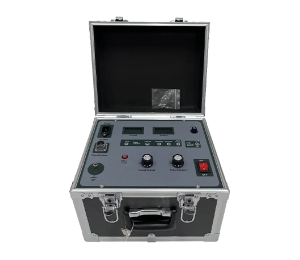 English
English



-
 Afrikaans
Afrikaans -
 Albanian
Albanian -
 Amharic
Amharic -
 Arabic
Arabic -
 Armenian
Armenian -
 Azerbaijani
Azerbaijani -
 Basque
Basque -
 Belarusian
Belarusian -
 Bengali
Bengali -
 Bosnian
Bosnian -
 Bulgarian
Bulgarian -
 Catalan
Catalan -
 Cebuano
Cebuano -
 China
China -
 China (Taiwan)
China (Taiwan) -
 Corsican
Corsican -
 Croatian
Croatian -
 Czech
Czech -
 Danish
Danish -
 Dutch
Dutch -
 English
English -
 Esperanto
Esperanto -
 Estonian
Estonian -
 Finnish
Finnish -
 French
French -
 Frisian
Frisian -
 Galician
Galician -
 Georgian
Georgian -
 German
German -
 Greek
Greek -
 Gujarati
Gujarati -
 Haitian Creole
Haitian Creole -
 hausa
hausa -
 hawaiian
hawaiian -
 Hebrew
Hebrew -
 Hindi
Hindi -
 Miao
Miao -
 Hungarian
Hungarian -
 Icelandic
Icelandic -
 igbo
igbo -
 Indonesian
Indonesian -
 irish
irish -
 Italian
Italian -
 Japanese
Japanese -
 Javanese
Javanese -
 Kannada
Kannada -
 kazakh
kazakh -
 Khmer
Khmer -
 Rwandese
Rwandese -
 Korean
Korean -
 Kurdish
Kurdish -
 Kyrgyz
Kyrgyz -
 Lao
Lao -
 Latin
Latin -
 Latvian
Latvian -
 Lithuanian
Lithuanian -
 Luxembourgish
Luxembourgish -
 Macedonian
Macedonian -
 Malgashi
Malgashi -
 Malay
Malay -
 Malayalam
Malayalam -
 Maltese
Maltese -
 Maori
Maori -
 Marathi
Marathi -
 Mongolian
Mongolian -
 Myanmar
Myanmar -
 Nepali
Nepali -
 Norwegian
Norwegian -
 Norwegian
Norwegian -
 Occitan
Occitan -
 Pashto
Pashto -
 Persian
Persian -
 Polish
Polish -
 Portuguese
Portuguese -
 Punjabi
Punjabi -
 Romanian
Romanian -
 Russian
Russian -
 Samoan
Samoan -
 Scottish Gaelic
Scottish Gaelic -
 Serbian
Serbian -
 Sesotho
Sesotho -
 Shona
Shona -
 Sindhi
Sindhi -
 Sinhala
Sinhala -
 Slovak
Slovak -
 Slovenian
Slovenian -
 Somali
Somali -
 Spanish
Spanish -
 Sundanese
Sundanese -
 Swahili
Swahili -
 Swedish
Swedish -
 Tagalog
Tagalog -
 Tajik
Tajik -
 Tamil
Tamil -
 Tatar
Tatar -
 Telugu
Telugu -
 Thai
Thai -
 Turkish
Turkish -
 Turkmen
Turkmen -
 Ukrainian
Ukrainian -
 Urdu
Urdu -
 Uighur
Uighur -
 Uzbek
Uzbek -
 Vietnamese
Vietnamese -
 Welsh
Welsh -
 Bantu
Bantu -
 Yiddish
Yiddish -
 Yoruba
Yoruba -
 Zulu
Zulu
Measurement Techniques for Capacitance and Tan Delta in Electrical Components
Capacitance and Tan Delta Measurement Understanding Electrical Components
Capacitance and tan delta measurements are crucial in evaluating the performance of electrical components, particularly capacitors. These measurements help in assessing the dielectric properties of insulation materials and the overall health of capacitors in various applications. This article aims to explain these concepts, their measurement techniques, and their significance in electrical engineering.
Understanding Capacitance
Capacitance is defined as the ability of a component to store electrical charge. It is measured in farads (F), with most practical capacitors operating in microfarads (µF) or picofarads (pF). The capacitance of a capacitor is influenced by its physical attributes, such as the surface area of the plates, the distance between them, and the properties of the dielectric material separating the plates.
Capacitance measurements are essential in designing circuits. They determine how much charge a capacitor can store and how it will behave in various electrical conditions. Accurately measuring capacitance ensures that circuits operate efficiently and reliably.
Tan Delta Measurement
Tan delta (tan δ) is a critical parameter that provides insight into the quality of a capacitor’s insulation. It represents the ratio of the resistive (or loss) component of the current to the reactive (or capacitive) component. Essentially, tan δ indicates how much energy is lost as heat in the dielectric material when subjected to an alternating current (AC).
capacitance and tan delta measurement

A lower tan δ value signifies a healthier capacitor, as it demonstrates lower energy losses. Conversely, high tan δ values can indicate deterioration in the dielectric material, potentially leading to capacitor failure. For this reason, monitoring tan δ is crucial in industries where reliability is paramount, such as power generation and transmission.
Measurement Techniques
Capacitance can be measured using various methods, including the use of LCR meters, which measure inductance (L), capacitance (C), and resistance (R) simultaneously. Another method involves the use of impedance analyzers, which provide more detailed insights into how a capacitor responds to different frequencies.
Tan delta is typically measured at specific frequencies (commonly 50/60 Hz for power capacitors) using a capacitance bridge or a specialized tan delta measurement device. These instruments apply an AC signal to the capacitor and analyze the resulting current phase angle, from which the tan δ value can be computed.
Significance of Measurements
Regular capacitance and tan delta measurements are integral in predictive maintenance strategies. They help in identifying potential problems before they escalate into costly failures. In high-voltage applications, for instance, monitoring these parameters is critical for ensuring equipment reliability and safety.
Furthermore, understanding these measurements aids engineers in selecting appropriate capacitors for specific applications, optimizing circuit designs, and extending the lifespan of electrical components. In conclusion, capacitance and tan delta measurements are fundamental practices that play a vital role in ensuring the efficiency and reliability of electrical systems. Their significance cannot be overstated in maintaining operational integrity across various industries.
-
Testing Equipment Industry Sees Major Advancements in 2025: Smart & Precision Technologies Lead the WayNewsJun.06,2025
-
Applications of Direct Current Generators in Renewable Energy SystemsNewsJun.05,2025
-
Hipot Tester Calibration and Accuracy GuidelinesNewsJun.05,2025
-
Digital Circuit Breaker Analyzer Features and BenefitsNewsJun.05,2025
-
Benefits of Real-Time Power Quality Monitoring Devices for Industrial EfficiencyNewsJun.05,2025
-
Earth Fault Loop Testing in High-Rise Building Electrical SystemsNewsJun.05,2025



